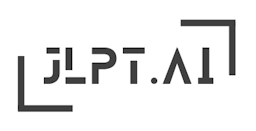

N3
音読み:shi
訓読み:moromoro
シshi
もろもろmoromoro
Expert, teacher, master
Imagine a person with a long robe and tall hat, representing a teacher or master. The hat symbolizes the wisdom and knowledge that the teacher imparts to their students. The robe represents the guidance and protection provided by the teacher.
The kanji '師' is an important character at the JLPT N3 level as it is frequently used in texts related to education, professions, and expertise. Understanding its readings and meanings is crucial for success in both kanji and reading comprehension sections of the exam.
彼は優れた師です。
He is an excellent teacher.
かれはすぐれたしです。
kare wa sugureta shi desu.
彼は料理の師匠です。
He is a master chef.
かれはりょうりのししょうです。
kare wa ryouri no shishou desu.
私は師と学ぶことができて幸運です。
I am lucky to be able to learn from a teacher.
わたしはしとまなぶことができてこううんです。
watashi wa shi to manabu koto ga dekite kouun desu.